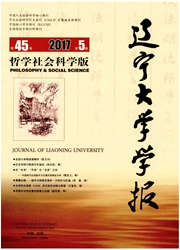

 中文摘要:
中文摘要:
中国城镇化进程中“农村病”与“城市病”并存且相互影响。农业小规模经营。劳动生产率低下;农民相对贫困和部分群体绝对贫困;“空心村”的普遍存在是现阶段“农村病”的主要表现。以交通拥堵、环境恶化、资源承载力薄弱、“城中村”环境和治安问题等为表征的“城市病”集中爆发,并向二、三线城镇蔓延。农业转移人口的非农化与市民化相脱离;城乡之间、大中小城市之间以及东中西各区域之间资源配置严重失衡;地方政府的治理理念与方式有悖于健康城镇化要求等等,这是导致“农村病”与“城市病”的主要原因。有序推进农业转移人口市民化,努力化解城乡间与城市内部的双重二元矛盾;合理配置社会资源,促进城乡一体化发展;转变政府治理理念和方式,促进城镇化健康发展是治理“农村病”与“城市病”的基本思路。
 英文摘要:
英文摘要:
Rural and urban problems coexist and interact with each other in the process of China's urbanization. Rural problems are as follows: agriculture is operated on a small scale and labor productivity is low; farmers are relatively poor, part of whom are absolutely poor. Urban problems include traffic congestion, environmental degradation, weak resource-carrying capacity and security problem. The solution to the rural and urban problems should include promoting transferring agricultural people to acquire citizenship, resolving double dual conflicts between urban and rural areas and within the inner cities, and rationally allocating social resources in order to promote the integration of urban and rural development.
 同期刊论文项目
同期刊论文项目
 同项目期刊论文
同项目期刊论文
 期刊信息
期刊信息
